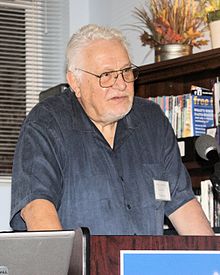*
Non-Pauline Epistles – Part One
.
- Apostles with no connection to an historical Jesus
- Pilate in the 2nd century epistle 1 Timothy
- 1 Peter knows a suffering Christ through Isaiah 53
- Christ “hung on a tree”
- The “flesh” and “body” of Christ and his “likeness” to men
- The epiphany of Jesus in 2 Peter
- Reading an historical Jesus into the epistles of John
- No historical Jesus in Revelation
.
* * * * *
Evidence for Jesus from Outside the Gospels
(Did Jesus Exist? pp. 113-117)
.
Is Ehrman being naïve or deliberately misleading?
There is an astonishing naivete to much of Bart Ehrman’s case for historicism. Perhaps it is aimed at a naïve readership, but it must leave such readers wondering if mythicists do indeed suffer from mental retardation or a simple inability to read texts. After all, the way Ehrman presents things, there can be no question that each and every writer in the early record clearly refers to an historical Jesus. Consider this statement:
But even in a letter as short as Jude, we find the apostles of Jesus mentioned (verse 17), which presupposes, of course, that Jesus lived and had followers. (p. 106, DJE?)
Well, it presupposes no such thing. The epistles contain many references to “apostles” who are not in any way represented as followers of a Jesus on earth. The epistle of Jude is only one of several referring to “apostles” that makes no such identification.
Independent Apostles
Paul himself, even in the orthodox view, was such an apostle. His apostleship was the result of a ‘call’ from God (e.g., Romans 1:1) and from ‘seeing’ the Lord Jesus in a vision (1 Cor. 9:1 and 15:8). In 2 Corinthians 11:4-5, in the midst of a diatribe against rival “apostles” who preach a ‘different Jesus’ from his own, he refers to both himself and his rivals as having received their respective kerygmas through the “spirit” (only his own, of course, was the valid one).
No connection here to an historical Jesus.
When he goes on in 11:12-15 to condemn those rivals for “masquerading as apostles of Christ” and being virtually agents of Satan, many scholars (such as C. K. Barrett) recognize that this kind of absolute condemnation is not being directed at the Jerusalem group, but other unspecified “ministers of Christ” (12:23) who proselytize independently, and certainly were not followers of a Jesus on earth.
Ehrman also conveniently ignores that in the entire body of epistles, not a single statement is made indicating that any apostles of the Christ were followers of a Jesus on earth, or traced any authority or correct preaching back to him.
It is impossible to believe that Ehrman could be ignorant of this wider application of the term “apostles” in the epistles, and only a little less difficult to believe that he is ignorant of mythicism’s arguments in this regard. He is either deliberately misleading his readers, taking advantage of their ignorance, or his own naïve reading of the texts is nothing short of an embarrassment. Continue reading “14. Earl Doherty’s Response to Bart Ehrman’s Case Against Mythicism – Pt.14”





 Physicist
Physicist 
